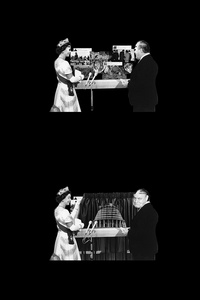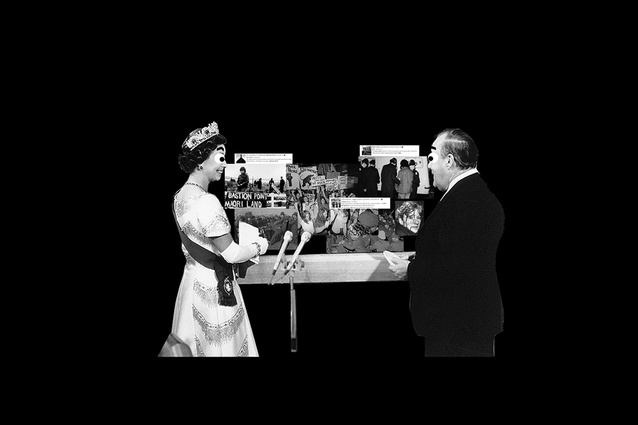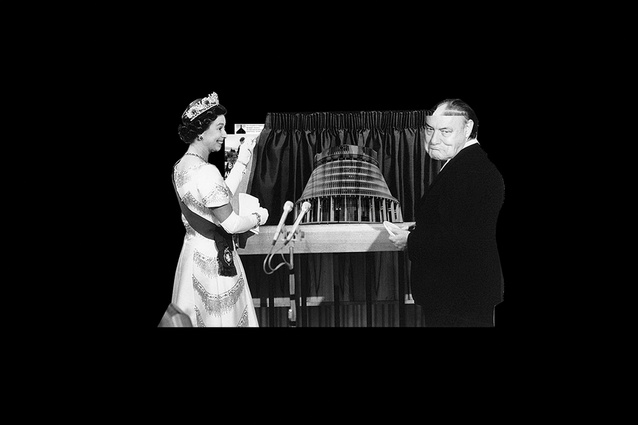Is the system working?
I am not sure what I should be writing about now because, as I write, election season is proceeding apace.
I know I felt around the edges of political difference in my last column and made a joke about the Lord of the Flies in workwear but, jeepers creepers reader, this election is… not the same as the last one we had. I wrote that and scratched my head for a good minute thinking about whether or not I really wanted to take this any further. I have found the policy lolly scramble at best reflecting earnest visions of the country’s best and, at worst, well I can’t tell which of the metaphors captures the spirit of it.
Are the policy announcements like watching a has-been magician pull rabbits out of a tattered hat? Or are voters being lured like fish by politicians dragging jokish sized hooks along the sea floor?
The other metaphor I have been considering is a combination of the three-legged and egg-and-spoon races, where political leaders are racing towards the goal of the highest number of seats in the House, tied at the ankles to their MPs while also balancing eggs: either swing voters, policies that need defending or errant ministers.
The thing I observe is that I am not trying out pleasant metaphors. With every party, there are claims where you can’t help but wonder what is going to happen when the rubber hits the road. And, at the same time, for the two main parties, there is a sense that you have seen it before. I see evidence that I am not alone in my scepticism. A park I drive past regularly is currently lined with billboards that concertina outward the faces of most of the party leaders with their electorate candidates. Some jaded human has taken the time to spray-paint, in gold, the word ‘liar’ across the smiling face of every politician. I note that everyone has received the democratic treatment of caps lock and, for the most part, even coverage of the face, to render the faces unrecognisable but for the tell-tale signs of gender, suits for men, and ideology – red ties: Labour; blue ties: National; a mix of colours resulting in a school-looking tie (which makes me think of the Hogwarts house Hufflepuff): ACT. You can make out that, under the letters, they are smiling, which is saying something – the projection of confidence and trustworthiness is captured even with graffiti all but covering every inch of these giant portraits.

I am sort of interested in this, as it feels as though this aspect of electoral scepticism is tied with many people having a really hard time with the cost of living, inflation, the ongoing impact from this year’s severe weather events, the continued crisis of housing and the state of things. As bad as it is, some of the criticisms that have persisted in this election season have been that there aren’t too many new ideas, if any. I was, myself, the most sort-of struck, positively and negatively, by proposed dental care subsidies and the foreign buyers’ housing tax. Teeth and taxes. I mean, it’s not death and taxes but tomato–tomato.
Still, time marches on and the sun will have set on October the 14th by the time this column is published. This pending reality has propelled me to use the column to think, well, attempt to think, beyond the electoral moment (which, to be honest, is competing with the Warriors moment) and about what sort of ideas are productive when one’s agency and contribution are situated within the built realm. What sort of reflection is useful here?
The first leaders’ debate between Labour leader Chris Hipkins and National leader Chris Luxon resulted in a few media headlines summarising the clash as not particularly, well, particular. It’s not entirely fair. You couldn’t, if you ran a ruler over their policies, confuse who is red and who is blue. There is also, for sure, real-world impact downstream from either’s proposed policy pledges. But there was a samey-ness to it and not the ‘Chris- Chris’ samey-ness, although that is part of it, but a, a, ahhhhh, flipping the menu over, looking at the front, then the back, and over, and feeling a ‘not sure’ type feeling of sameyness. For me, personally, it is not the swing vote conundrum. I will vote in line with a personally held politic but I would say I am looking for some assurance that I am saying no to the things I think I am saying no to and for some confidence in my decision.
A few nights later, the Newshub Nation Powerbrokers’ Debate with ACT leader David Seymour, NZ First leader Winston Peters, Te Pāti Māori co-leader Debbie Ngarewa-Packer and Green Party co-leader Marama Davidson was comparatively spicey. Personal flair aside, the debate was the more compelling of the competition for the breadth of politics contested. It was made more convincing in that the differing visions for the country cannot, somehow, be made to meet in the middle – it’s one or the other but not both. Or, at least, not at the same time. And it is this quality of the power-broker parties that has captured those of us turning the menu over and over.
What is there to learn here for the built realm? For this column, I began reading a London Review of Books essay ‘How can it work?’ by Professor of Politics at Cambridge David Runciman. The question posed was whether or not American politics, with its own style of democracy of “such fractured and chaotic popular input”, could really still work.¹ The essay was written in 2013 and it is easy to see it as a harbinger of things which would unfold and which, now, have passed. The past 10 years and storming the Capitol aside, the question can be applied to our own democracy: is the system working?
The debates seem to suggest that an overhaul is not warranted, right now at least, but… things do seem missing from the menu. About a quarter of the way through, Runciman borrows a statement from journalist and novelist John Lanchester, and adapts it to the question of politics in a way that stays with me: that the state of knowledge for macro-politics is that “nobody knows anything”, for there is too much information in the micro of politics.²
I stopped short when I read that and reflected; could we say the same thing about architecture? Are we so flooded with the micro, while the macro question of “Is the system working?” goes unanswered? I hope not but, also, if that is the case, I don’t think it should be left to chance. You know, just some thoughts.
REFERENCES
1. Runciman, David. ‘How can it work?’ London Review of Books, 21 March 2013, Volume 35, No. 6. lrb.co.uk/the-paper/v35/n06/david-runciman/how-can-it-work
2. Ibid.












